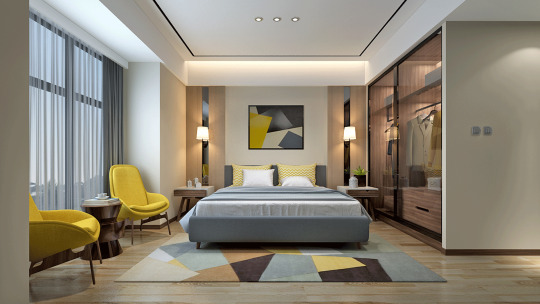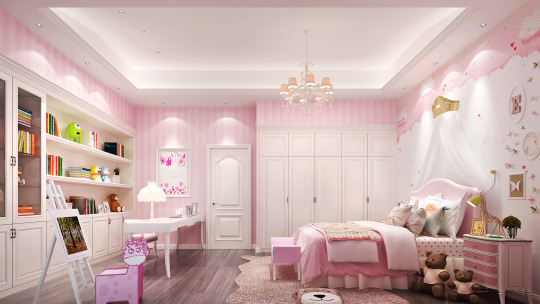Text
The Psychology of Color in Home Interior Design

When it comes to home interior design, color is a powerful tool that can significantly impact the mood and atmosphere of a space. The choices you make regarding color can evoke feelings of calm, energy, warmth, or even creativity. In this article, we'll delve into the psychology of color in interior design, exploring how different colors can influence emotions and providing tips on selecting the right colors for various rooms in your home.
Understanding Color Psychology
Before we delve into specific colors for different rooms, it's essential to understand some of the psychological effects associated with various colors:
1. Red: This vibrant color is associated with energy, passion, and excitement. It can stimulate conversation and appetite, making it a great choice for dining rooms or areas where you want to create a lively atmosphere.
2. Blue: Blue is often linked to calmness, tranquility, and productivity. It's an excellent choice for bedrooms, home offices, or spaces where relaxation and concentration are essential.
3. Green: Green symbolizes nature, growth, and balance. It can promote a sense of harmony and is ideal for bedrooms, bathrooms, or areas where relaxation and rejuvenation are priorities.
4. Yellow: Yellow is associated with happiness, positivity, and energy. It can be used in kitchens, dining areas, or as an accent color in spaces where you want to infuse vibrancy.
5. Purple: Purple represents luxury, creativity, and spirituality. It can work well in bedrooms or creative spaces, adding a touch of elegance and inspiration.
6. Gray: Gray is versatile and can convey sophistication, neutrality, and a sense of calm. It's suitable for various rooms and can be used as a primary or accent color.
7. White: White signifies purity, cleanliness, and simplicity. It's a popular choice for creating an open, airy feel in living areas and bathrooms.
8. Black: Black denotes sophistication and can add drama to a space. When used in moderation, it can create a sense of elegance and luxury.
Choosing Colors for Different Rooms

1. Living Room: For a welcoming and sociable atmosphere, consider warm and inviting colors like earthy tones (beige, terracotta), warm grays, or soft blues. These colors encourage conversation and relaxation.
2. Bedroom: Tranquil and soothing colors such as soft blues, greens, lavender, or neutral tones work best in bedrooms. These colors promote restful sleep and relaxation.
3. Kitchen: Kitchens benefit from bright and energetic colors like yellows, reds, or even shades of green. These colors can stimulate appetite and creativity.
4. Home Office: For a productive home office, opt for colors that enhance focus and concentration, such as cool blues, greens, or neutral grays.
5. Bathroom: Spa-like colors like soft blues, greens, or neutral tones create a serene and refreshing atmosphere in bathrooms.
6. Dining Room: Warm and inviting colors like red, deep orange, or warm browns can stimulate appetite and create a cozy ambiance for dining.
7. Children's Room: Playful and vibrant colors like primary colors or pastels can foster creativity and imagination in children's rooms.
8. Hallways: Neutral or light colors in hallways can make the space feel more expansive and allow artwork or decor to stand out.
Conclusion
Incorporating the psychology of color into your interior design can transform your home into a place that not only looks beautiful but also feels harmonious and inviting. By carefully selecting colors that align with the desired mood and function of each room, you can create a space that enhances your well-being and complements your personal style. Remember that color is a versatile tool, and with the right choices, you can make your home a reflection of your unique personality and preferences.
#interior design#home interior design#home interior design ideas#home decor#home design#home interior#furniture
0 notes